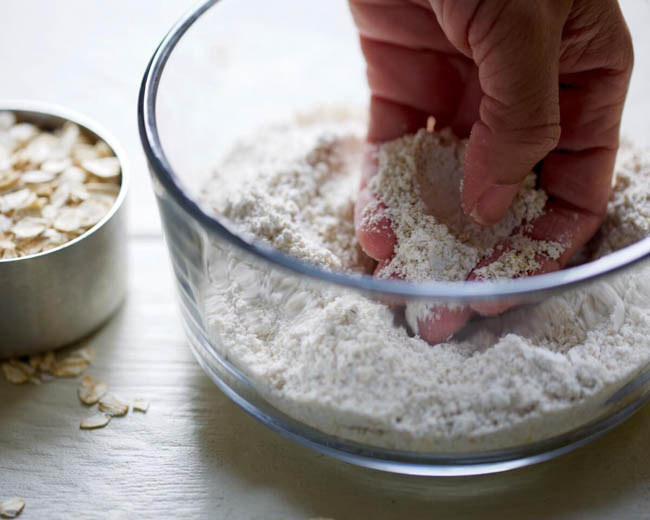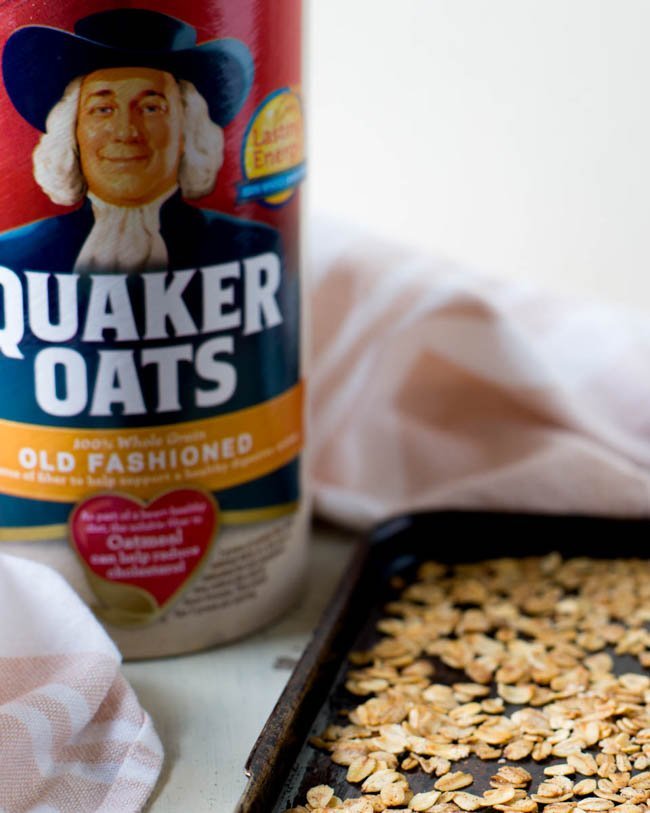Disclosure: This post is sponsored by The Quaker Oats Company, but all opinions are our own. Thank you for supporting our work here at Food Heaven!
Let’s talk about whole grains.
Believe it or not, most of our clients are confused about what a whole grain is. They’ve heard about whole grains, and know they’re good for us. But they aren’t sure why.
People are also unclear about which grains are considered “whole”. For example, is “whole wheat” a whole grain? (Yep.) Does oatmeal count? (You betcha.) Popcorn? (Yes!) Grits? (No.)
Today, we are providing a guide to whole grains that answers all questions we get from our clients on a regular basis. We want you to feel less confused, and more empowered to make food decisions that work for you.
What exactly is a whole grain?
To put it simply, a whole grain is “whole”. Meaning, it contains all of the naturally occurring parts and nutrients of the entire grain or seed. For example, whole grains contain 100% of the original grain– which includes the bran, germ, and endosperm.
Components of a whole grain:
- Bran: Contains fiber, B-vitamins & antioxidants
- Germ: Contains B-vitamins, minerals, some protein, & fats
- Endosperm: Contains starch, protein, small amounts of vitamins, & minerals
Examples of whole grains:
If you’re still wondering what types of foods are whole grains, here are a few examples to look out for on your next shopping trip:
- Old Fashioned Oats (yep, many people are surprised to learn that oats are in-fact a whole grain)
- Rye
- Whole Wheat, including bulgar
- Corn, including popcorn and corn tortillas made with whole cornmeal
- Barley
- Quinoa
- Teff
- Whole Grain Rice, including brown, forbidden, black & wild rice
How do I shop for 100% whole grains?
- Look for the term “whole grain” on the label AND on the ingredient list.
- The terms “whole grain” or “whole” will usually be followed by the type of grain. Examples include whole wheat flour, which is different from wheat flour.
- Don’t be fooled! Look out for “multigrain” and “organic” labels on packages. These products are not necessarily made from whole grains, and may in fact be made with little or no whole grains.
- Don’t fall for the color trap. You can’t tell whether or not a food is a whole grain based on its color alone. For example, bread can be darker in color when molasses is added to the ingredients. Always read the label!
What are the health benefits of whole grains?
There are many benefits to consuming whole grains. Here are some of the benefits in a nutshell…
- Nutrient density. The whole grain, including the bran and germ provide fiber and important nutrients.
- Certain whole grains may provide a slow release of energy. For example. the fiber in cooked whole grain oats may help slow digestion and the release of glucose into the blood stream, providing a slower supply of energy.
- Many whole grains are naturally rich in folate, which is an especially important nutrient for women who capable of becoming pregnant
- Eating whole grains can help you meet your daily fiber needs. Experts recommend eating at least 25 to 30 grams of fiber a day from a variety of grains, fruits and vegetables to help support a healthy digestive system. A serving of whole grain oats provides 4 grams of fiber.
How much do I need in a day?
Most Americans are already getting enough grain, but they are not getting enough whole grains. The recommendation is that at least ½ of the grains eaten should be whole grain. So, if you have 1/2 cup of raw oats cooked into oatmeal in the morning for breakfast, 2 slices of 100% whole wheat bread with lunch, and 1 cup of cooked white rice with dinner, you would be getting 3 servings of whole grains, 1 from the oatmeal and 1 from each slice of bread. #winning
And there you have it. Your guide to whole grains. Learn anything new today? Let us know in the comments below. What are your favorite whole grains?
Resources:




Very insightful, I will try these whole grains 🙂